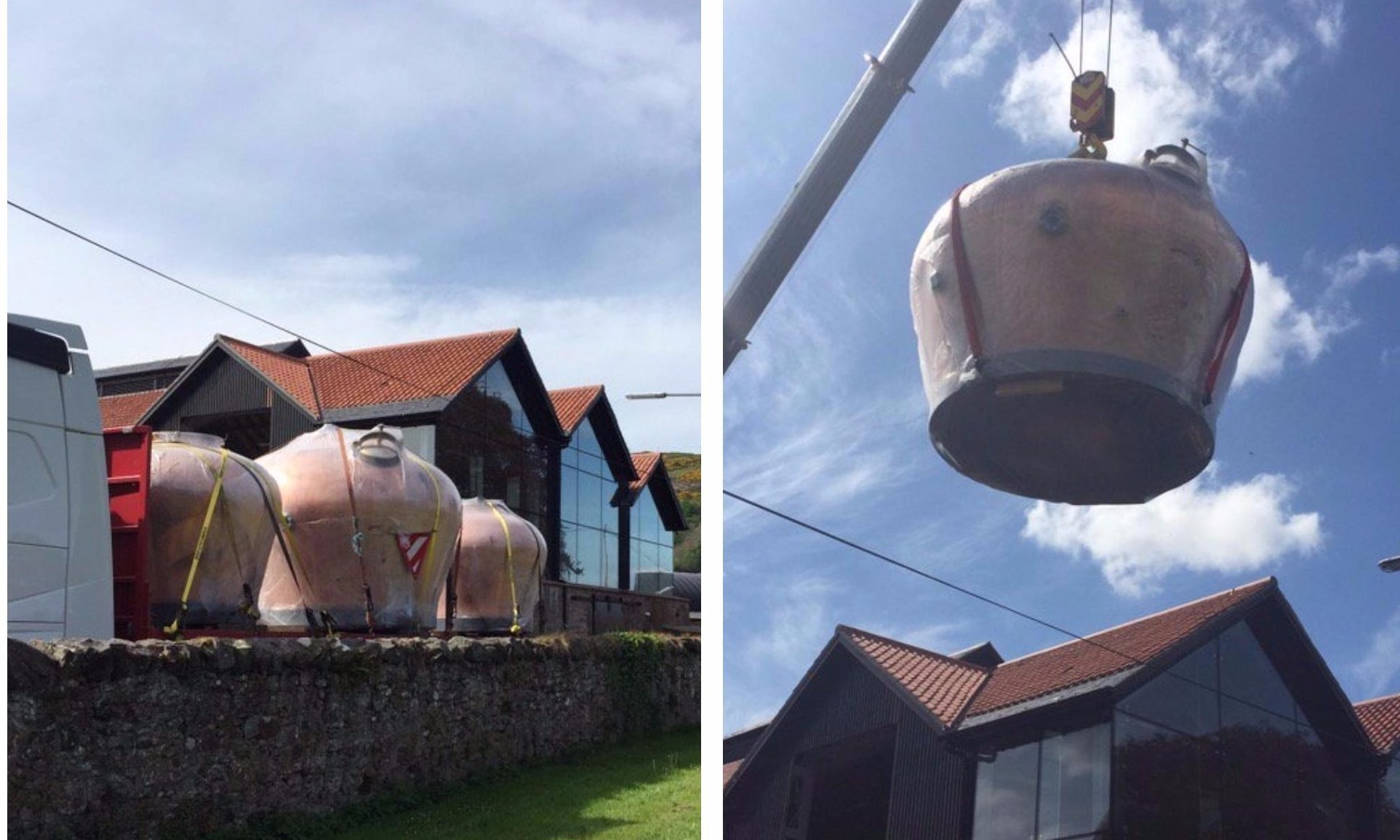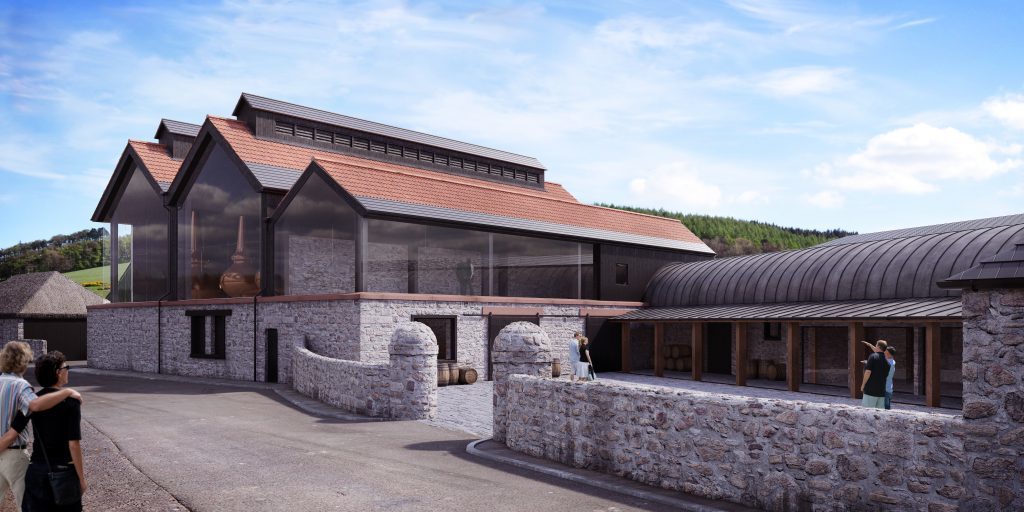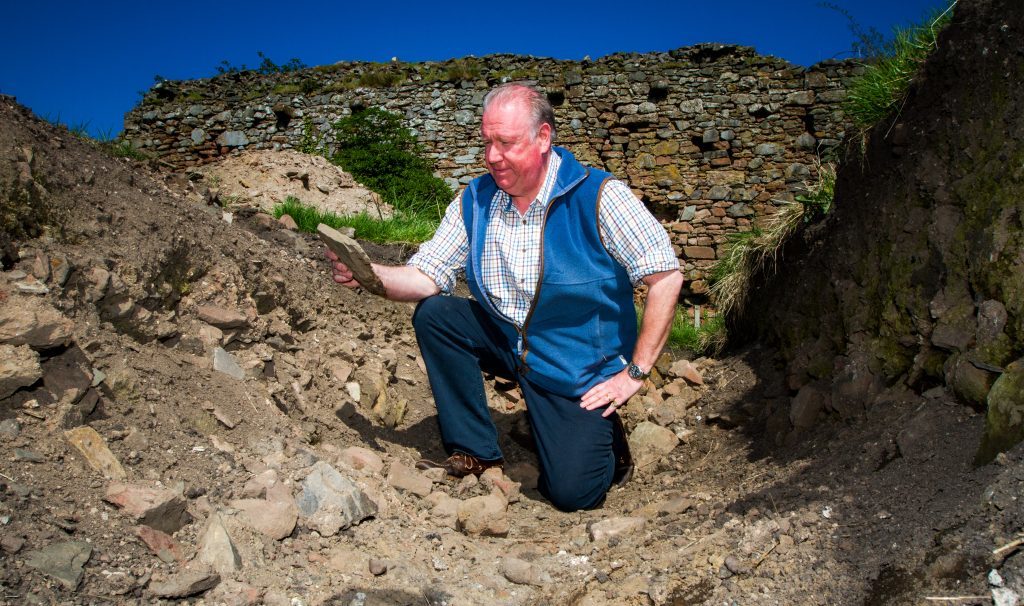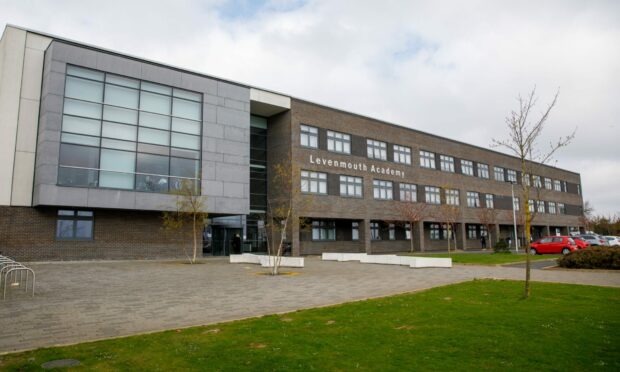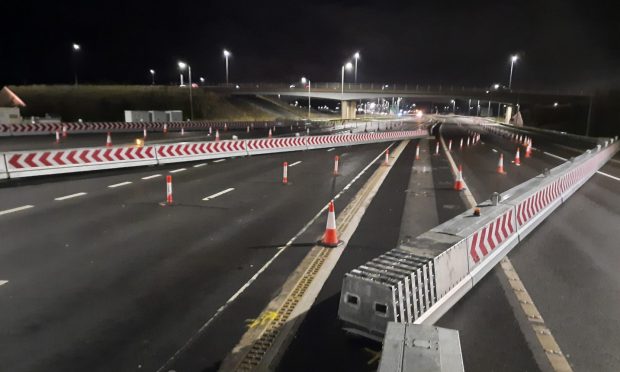These photographs show the huge progress being made to bring a historic distillery back to life in Fife after 500 years.
Three copper stills arrived at Lindores Abbey, in Newburgh, last week as its owners look to get whisky production moving on the site for the first time in centuries.
The £10 million distillery and visitor centre on the grounds of the 12th Century abbey, regarded as the spiritual home of Scottish whisky, is due to open in August.
'Pops' 'Dodo' and 'Gee' have come home and look forward to seeing you all soon #SpiritualHome #Whisky #Scotland #Fife pic.twitter.com/7oHUIcMPht
— LindoresAbbeyDistillery (@LindoresAbbey) May 17, 2017
What's that coming over the hill….it's a wash back, it's a wash back! 2 more in the way #whisky #History #Fife pic.twitter.com/yZ60m0WYal
— LindoresAbbeyDistillery (@LindoresAbbey) May 16, 2017
The stills were made by Forsyths of Rothes and delivered last Wednesday, at the same time a borehole at the distillery, which will supply it with fresh water, reached its goal of 230ft.
Drew McKenzie Smith and his wife, Helen, have spent the past two decades battling to bring whisky-making back to the abbey.
Distilling was taking place at Lindores from at least as early as 1494.
The first written evidence of whisky production in Scotland is a document asking friar John Cor, a Lindores monk, to produce eight bolls of malt into “aqua vitae” at the request of King James IV.
Managing director and founder of the Lindores Abbey Distillery, Mr McKenzie Smith said: “Today (Wednesday) is a big turning point, it is the day the stills arrived, there is no turning back now that is for sure.
“It is a big day. We are still aiming to open at the end of August, up until now we have been building the distillery. I suppose this is the end phase.
“Having three stills is different to most distilleries. The norm is two: one is the spirit still and one is the whisky still.
A beautiful day for a special delivery! #Whisky #Distillery #Scotland To find out more go to https://t.co/BS8Mykf7rt pic.twitter.com/sD7bHjqB3X
— LindoresAbbeyDistillery (@LindoresAbbey) May 17, 2017
“The reason we have got three is because of our late consultant, Dr Jim Swan – who sadly passed away quite recently. His vision was a three still version, a much lighter whisky.
“Lindores is known as the spiritual home of whisky. It started off as a dream, and it is now happening. All the stills are being fitted.
“It is a big day all round. The bore hole has gone down to 70m (230ft), finding pure Scottish water.”
Mr McKenzie Smith added that the visitor side of the distillery was also taking shape, with artwork currently being installed.
The team behind the distillery plans also undertook archaeological digs around the abbey, leading to the discovery of several medieval artefacts.
